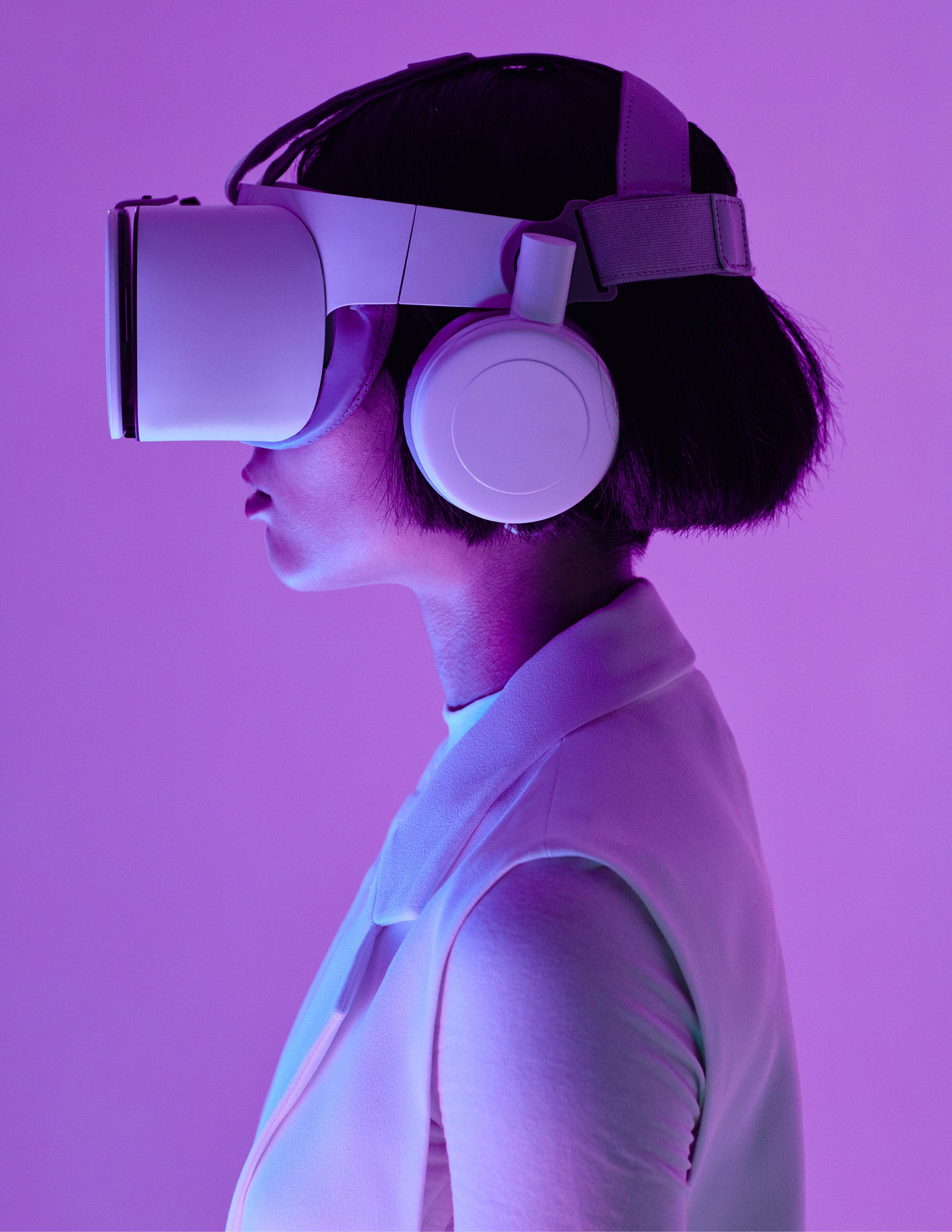Inspiring colour editorial from MIX Magazine.
As the Metaverse rapidly becomes a significant platform for product development and user experience, intriguing possibilities for colour forecasters are emerging. Here, we look at how this new world will impact colourists, from exploring how aesthetic choices will be influenced by virtual representations, to understanding how the intersection between physical and digital worlds will drive new design approaches.

Describing the Metaverse as the internet in 3D, Ed Greig, Chief Disruptor at Deloitte defines it as “A form of digital interaction where connected, virtual experiences can either simulate the real world or imagine worlds beyond it.” By choosing one direction over the other, the Metaverse is also about exploring how these worlds interconnect with the common goal of enhancing human experience. The global pandemic has accelerated the development and interest in the Metaverse, as brands have looked to capture audience attention online. Digital experiences quickly became a solution, and as further progress and investment is being made, industries are taking notice of the potential this next phase of the Internet’s development could offer.

Max Williams | Fade
When it comes to colour, material and finish, there are two key routes for future trend predictions; firstly, a format that sees physical products co-exist with virtual representations, and secondly, online-only visions that require unique directions. This hybrid of realities is fast becoming a design direction in its own right. As we are already seeing, digital offerings now inspire physical aesthetics, such as futuristic iridescent effects, as well as virtual experiences aiming to emulate the real world. You could argue our approach needs to see these two worlds overlap with the Metaverse, acting as a digital extension to the everyday rather than a replacement for real-life opportunities and situations. A good example of this, recent textile graduate from Loughborough University Max Williams explores digital realties in Euphoric Feelings, creating colours, textures and effects that evoke a digital atmosphere experienced in a physical space. “Taking inspiration from mundane objects and places, the collection is manually and digitally manipulated. Once ordinary imagery is now unrecognisable, compelling us to look at these ideas in a new light,” explains Williams.

A key colour might exist in the physical world and be recreated virtually, or perhaps a digital colour could be selected and then reimagined through physical products. So, when it comes to forming stories, is it not more relevant to create palettes that connect the digital and physical worlds? Pantone’s Colour of the Year 2022, Very Peri, is a translation of the online world into a physical offering and it is likely that we will continue to see colours emerge in this way, beginning in one sphere and migrating over to the other.

Gaming has been a driving force in realising the Metaverse and its potential, and we are now at a point where the opportunities extend far beyond this initial platform. This has already caught the attention of the fashion industry.

The launch of Metaverse Fashion Week 2022, held on Decentraland, was seen as a valuable opportunity to engage with customers, especially younger audiences already engaged in digital spaces. The Metaverse also provides customisation at the click of a button, and so while in the physical world we are committed to the choices we make during production, online this can be altered and updated at any time. The freedom the Metaverse offers to colour application is vast, allowing for swift changes of a look based on mood or requirements.

A key advantage of the digital spectrum is that colour has a much broader range of possibilities; as screens are backlit, bright and vibrant tones are readily achievable. However, there is also a focus on evoking the physical qualities of softer, more ethereal colours on screen, again charting how two realities combined are driving the latest aesthetics.

Limitations in the real world with finish and effects due to cost and time are also a driving factor for forecasting; where a colour might be solid and opaque in its physical state, on screen the designer can be far more experimental, liberally adopting anything from opalescent to colour shifting effects. And while a colour might be specified in the Metaverse to change depending on the viewing angle, couldn’t we simply offer a range of alternatives for a physical output that captures a similar mood?

A challenge for digital environments is of course consistency, where a colour will not appear the same from one screen to the next. However, as we move towards a more fluid and personalised approach to design application could this be something to embrace and turn into an opportunity? Moving away from direct colour specifications with a ‘one size fits all’ approach, we can instead encourage more focus on the mood and qualities a colour theme provides, playing to the strengths of our advancing worlds but also shifting a focus towards more personalisation of trend information. The full potential of the Metaverse will not be realised for decades. But, while we are on this journey, it is exciting to explore alternate ways of approaching colour prediction and application.

MIX Magazine is a quarterly print and digital publication by our creative agency, Colour Hive and is available as part of Colour Hive Membership.
Duha Group is a global, industry leading manufacturer of innovative colour marketing tools. We specialise in colour matching, colour mass reproduction and colour system management.
We are here for all your colour needs, lets talk…
Want to stay updated on global colour solutions? Sign up for our quarterly Colour Strategy Newsletter


